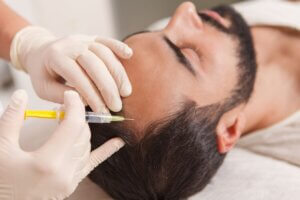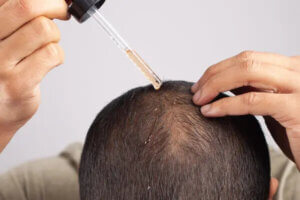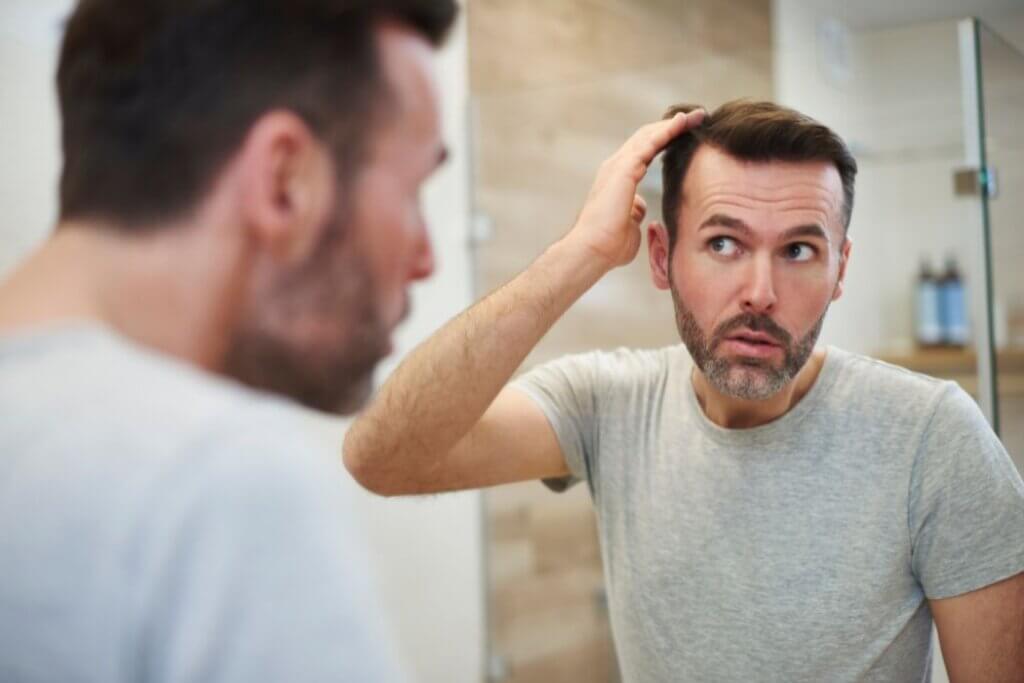The good news is that there are non-surgical means of tackling alopecia.
Firstly, let’s take a look at how male pattern balding works.
Male Pattern Balding: What You Need To Know
Male pattern balding (or alopecia) is linked to genetics and hormones. It is thought to be a hereditary condition, though research is not definitive when it comes to determining the root cause.
Hair grows from follicles, but as hair loss evolves, the follicles reduce in size. As the follicles become smaller and thinner, hair begins to fall out much faster than normal non-balding hair. As testosterone is converted into a hormone called dihydrotestosterone (DHT), this DHT shrinks the follicle, causing the scalp to create less hair.
Finasteride
Finasteride works as a drug that reduces testosterone from turning into dihydrotestosterone. By lowering the levels of DHT within the scalp, follicles are less vulnerable to thinning and losing their structural integrity. Daily doses of Finasteride can lower DHT levels in the scalp by as much as 70%.
PRP Hair Restoration

PRP Hair restoration is a natural solution to encouraging hair growth by harnessing the power of the platelets in your blood. The process is non-surgical and involves 4 – 6 treatment sessions to be visibly effective.
A blood sample is taken and then spun in a centrifuge. During this process, the platelets are isolated and then injected at the sites where hair loss has occurred. The regenerative power of the platelets results in thicker hair, though this treatment is not recommended for areas of the scalp with no remaining follicles.
Reputable clinics such as Bodyvie and Fiore Aesthetics offer private PRP therapy carried out by an experienced doctor or clinician. But it’s not just London-based clinics offering such treatments; clinics such as Beautiful Smiles (based in Leicester) are dotted about, up and down the country.
Make sure you research before committing to ensure the clinician performing your treatment is experienced in PRP.
Minoxidil

Healthy, thick hair needs a healthy blood supply carrying nutrients and oxygen. Certain products, such as Minoxidil, improve the vitality of targeted areas of hair, providing this oxygen and nutrient supply.
Minoxidil is a stimulant treatment that reverses follicles’ miniaturisation and extends each growth phase. It’s the only over-the-counter ingredient clinically proven to reverse hereditary hair loss. The leading brand of Minoxidil is Regaine ®
What about natural hair loss methods?
Blood flow is essential to ensure the scalp area continues creating thick, healthy hair. With this in mind, regular exercise and refraining from habits restricting blood flow (such as smoking) will prevent hair loss.
Unfortunately, if hair loss has already occurred, it’s impossible to reverse this by adopting a healthy lifestyle (though you should do this anyway as it’s only going to bring about good things for your well-being!
Stress and hair loss have long been linked. When the body creates the hormone cortisol (the ‘fight or flight’ hormone), this can affect immune cells and hair follicles. Research is currently being carried out to determine whether skin and hair can create their own stress hormones. Inflammation in the body due to diet can also trigger the release of cortisol, making nutrition an important aspect of keeping hair loss at a minimum.
If you have tried any treatment methods listed above, we would love to hear from you in the comments. Join the conversation below.


